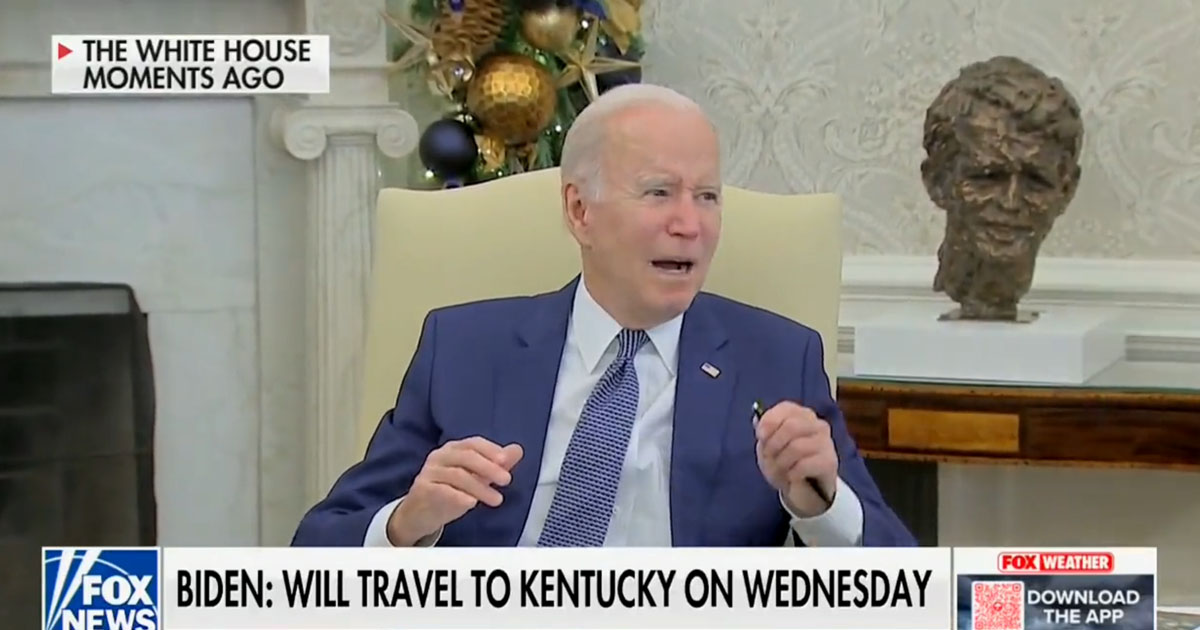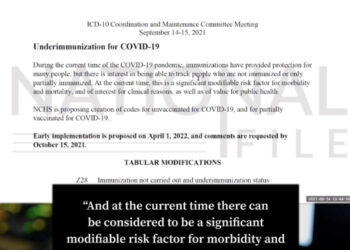Last Updated on December 14, 2021
Democrat President Joe Biden took a lone question from the White House press corps on Monday, in defiance of his aides who were screaming “Thank you! Thank you! Thank you! Thank you!” in an attempt to clear the room before the leader of the free world could interact with the press.
As the offscreen staff yelled “Thank you!” incessantly, Biden tentatively raised his hand and looked over to the cluster of staff onscreen, stammering “I’ll-I’ll-I’ll-I’ll-I’ll-I’ll take this one.”
A reporter then asked the President about his strategy for convincing Sen. Joe Manchin (D-WV) to vote his approve the president’s highly unpopular “Build Back Better” bill.
“No, look, I told you when I speak to senators to try to – or house members, or governors, or any other elected official, to try to convince them that what I’m proposing makes sense and is not inconsistent with what they believe, um, I do that and then I’ll discuss it afterwards,” Biden said, repeatedly glancing over at the group of staff onscreen.
Biden’s staff really doesn’t want him taking questions pic.twitter.com/OJ9PwAG2K4
— Benny Johnson (@bennyjohnson) December 13, 2021
Immediately after Biden finished answering the question, the cacophony of “Thank you!” resumed, drowning out any hope of more questions being answered by the President.
As National File previously reported, the White House reportedly cut a live feed last week because a Taiwanese official appeared in front of a map that showed Taiwan as a separate country from mainland China:
The live video feed at Democrat President Joe Biden’s Summit for Democracy was cut during a presentation by Taiwanese Digital Minister Audrey Tang last Friday after the Taiwanese official appeared in front of a map showing Taiwan as being separate from China, which claims the island as its own.
The panel was, ironically enough, focused on “countering digital authoritarianism.”
Sources reportedly told Reuters that Biden’s White House ordered the feed to be cut because “The White House was concerned that differentiating Taiwan and China on a map in a U.S.-hosted conference – to which Taiwan had been invited in a show of support at a time when it is under intense pressure from Beijing – could be seen as being at odds with Washington’s “one-China” policy, which avoids taking a position as to whether Taiwan is part of China.”

















